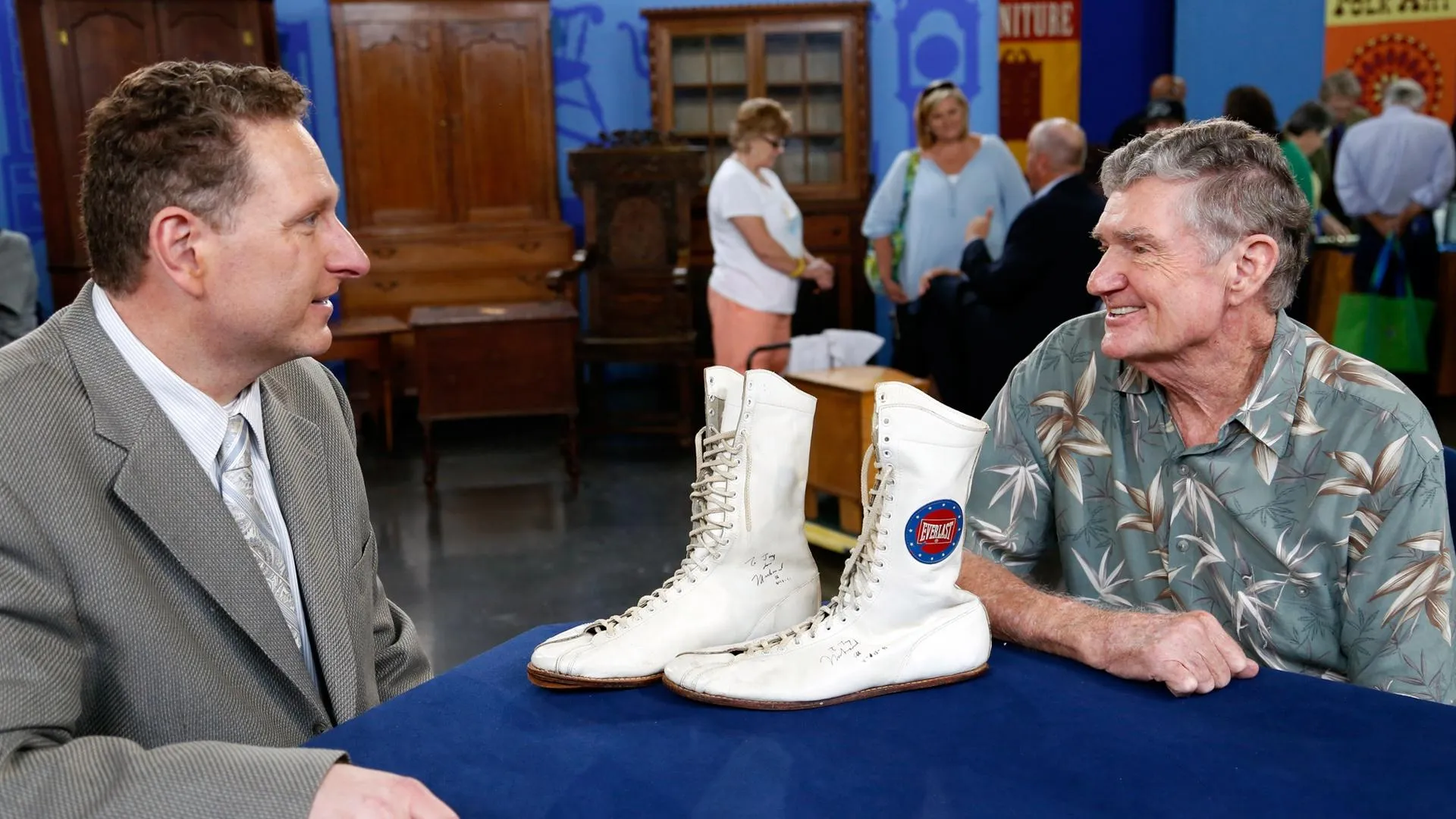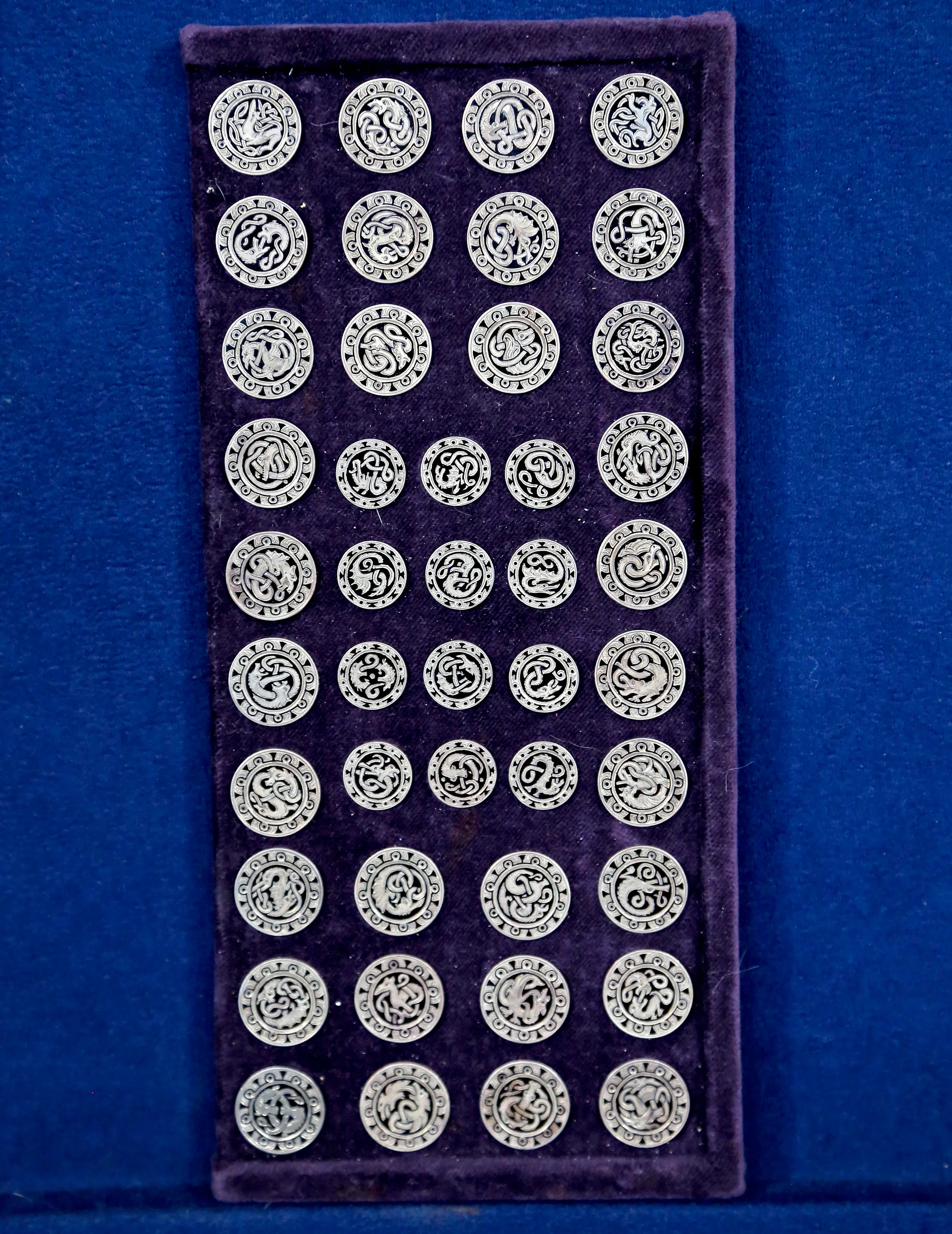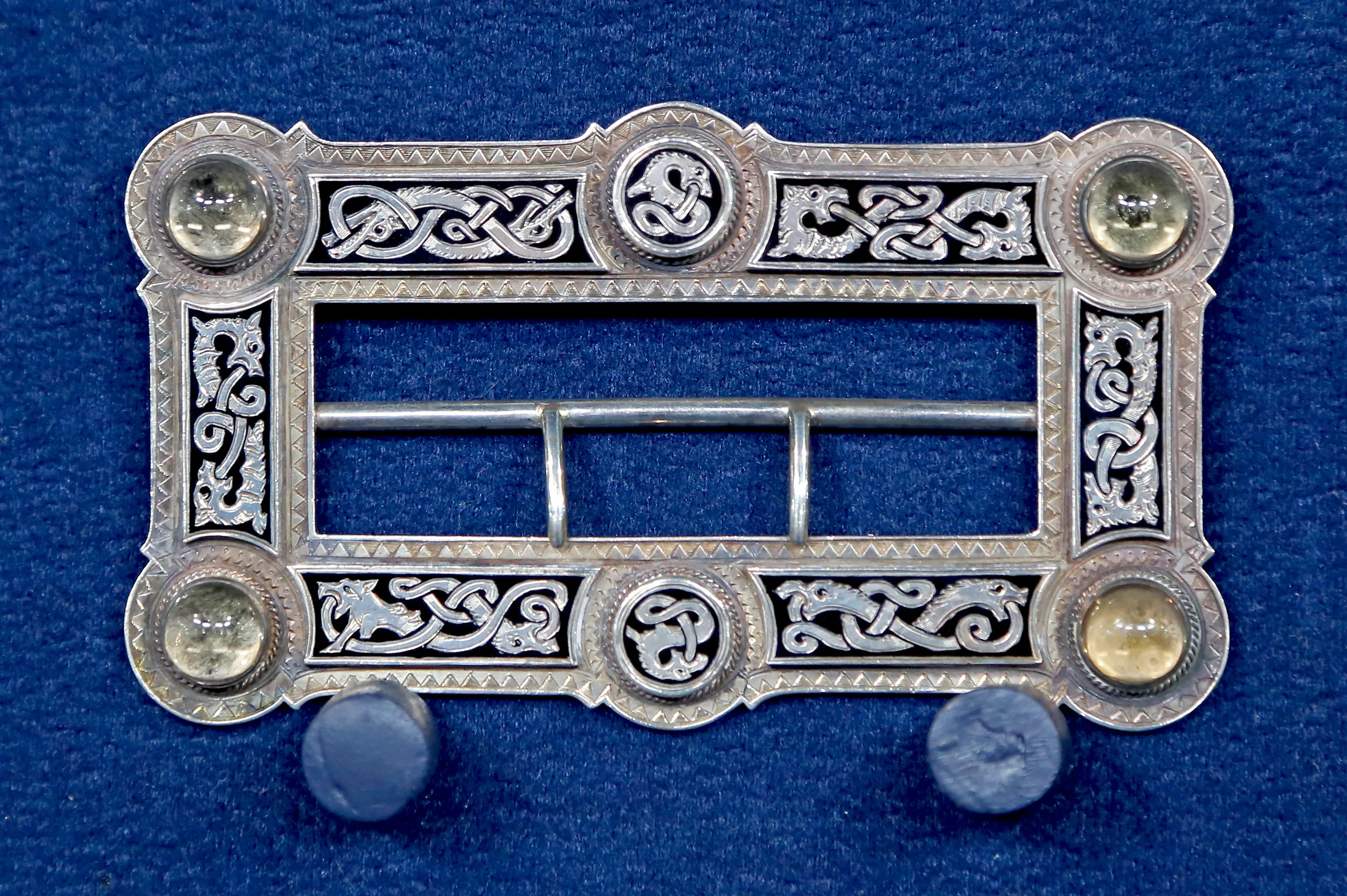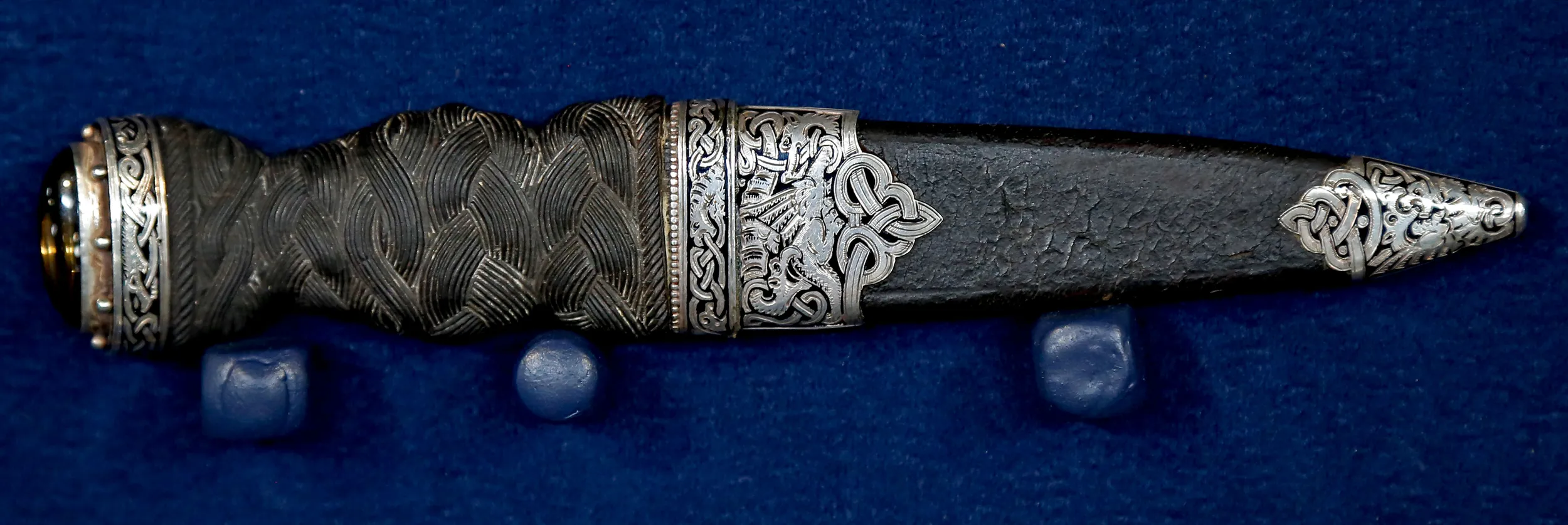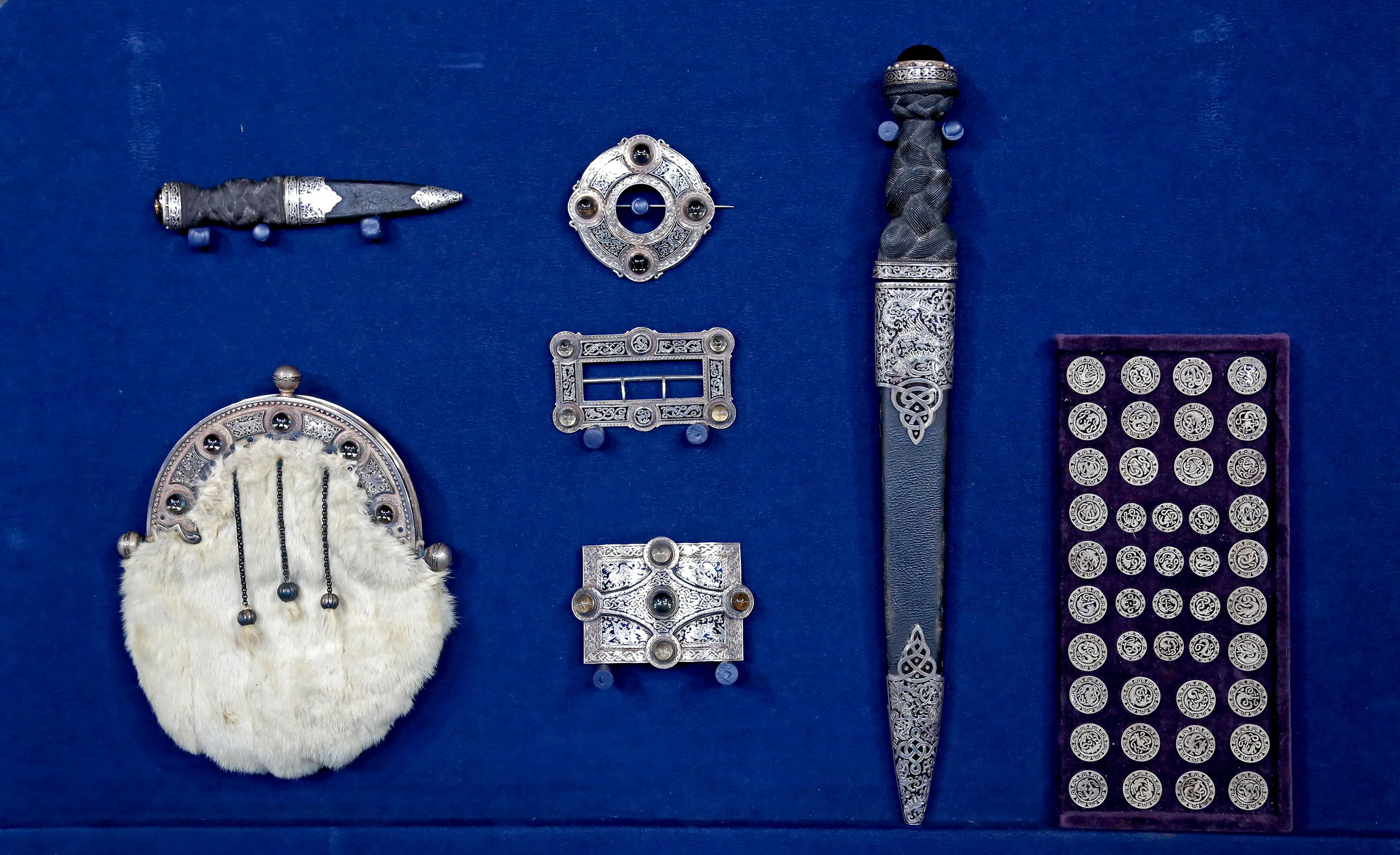GUEST: Well, my father went to Edinburgh, Scotland, in 1933 after graduating college. And he purchased this from an antique dealer there.
APPRAISER: Is he Scottish?
GUEST: Yes.
APPRAISER: Okay. So he went to university in Edinburgh, presumably?
GUEST: He went to Harvard.
APPRAISER: Oh, okay. Well, it's a Scottish dress set, clearly. We have all the accoutrements necessary for a Scottish man to wear with his ceremonial costume. Firstly the sporran, which is probably the most easily recognizable piece, together with this ermine lining and inset with these wonderful cabochons. Secondly, the skean dhu here, which is the small dagger that would have been concealed around the sock. And then here we have one of my favorite pieces in the group, this beautiful buckle, which would have been worn around the waist. And then these two pieces here, which would have been basically used to secure the tartan across the chest. One of the more imposing parts of the collection is this wonderful dagger, a dress dagger, with this beautifully carved handle made of bogwood. And if I just flip this forward, I'll just show you this very large cabochon here, which is known as Cairngorm. It's a type of quartz which is used... or mined around the Cairngorm Mountains, which is what gives it its name. It has this wonderful smoky color to it. All of the pieces have these inset cabochons, which are essentially different types of quartz. But the Cairngorm is the one that's most recognizable because it's more smoky. Also here we have all of the buttons that would have been used for the dress, so that you could have attached them to jackets, shirts, so on and so forth. So just to talk a little bit about who manufactured it, if I turn the buckle over at the front here, we have a whole series of marks. In the center is the maker's mark. That's "WM," for William Marshall. The date letter are for 1873. The monarch's head, that was to show that the duty had been paid on the silver. And there's also the thistle mark, which is the Scottish silver guarantee mark, together with the three turrets, which is the Edinburgh Assay Office mark. One of the things that really delights me about this collection is the quality of this engraving. Celtic design strapwork, beautifully done, with dragons, with flaming mouths, wonderful intertwining strapwork. Really is work of superior quality. Do you know how much your father paid for it?
GUEST: Absolutely no idea.
APPRAISER: Okay. At auction, I would estimate this to sell for between $8,000 and $12,000.
GUEST: Uh-huh.

